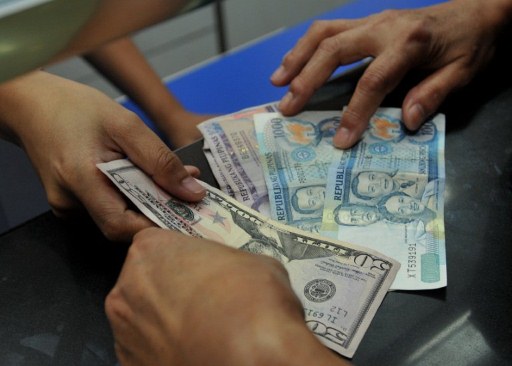Dollar remittances spike in April; 4-month total up 4%, says BSP

INQUIRER FILE PHOTO
Dollars sent home by expatriate Filipinos rose during the first four months of the year driven by the growth in remittances from both land- and sea-based workers, the central bank said on Monday.
In a press statement, the Bangko Sentral ng Pilipinas said that personal remittances from overseas Filipinos for the first four months of the year totaled $10.4 billion, 4 percent higher than the level recorded in the comparable period in 2017.
For April 2018 alone, remittances increased by 12.9 percent year-on-year to reach $2.6 billion.
“The continued growth in personal remittances during the first four months of 2018 was driven by steady remittance inflows from land-based overseas Filipino workers with work contracts of one year or more, which aggregated to $8.1 billion, and compensation of sea-based workers and land-based workers with short-term contracts, which reached $2.1 billion,” BSP Governor Nestor Espenilla Jr. said.
Cash remittances from overseas workers coursed through banks posted a 12.7 percent year-on-year growth at $2.3 billion in April 2018. Remittances sent by land-based workers at $1.8 billion and sea-based workers at $500 million increased by 15.1 percent and 4.8 percent, respectively, compared to the levels posted in the same month a year ago.
Article continues after this advertisementThe primary contributors to the growth in remittances during the month are the US with 4.2 percentage points contribution to the 12.7 aggregated growth, Canada (1.9 percentage points) and Singapore (1.0 percentage points).
Article continues after this advertisementThe increase in the cash remittances in April 2018 brought the cumulative cash remittances for the first four months of the year to $9.4 billion, higher by 3.5 percent year-on-year.
By country source, the bulk of cash remittances during the period came from the US, Saudi Arabia, United Arab Emirates (UAE), Japan, Singapore, United Kingdom, Canada, Germany, Qatar and Kuwait. The combined remittances from these countries accounted for almost 80 percent of total cash remittances.
Personal remittances represent the sum of net compensation of employees (i.e., gross earnings of overseas Filipino workers with work contracts of less than one year, including all sea-based workers, less taxes, social contributions, and transportation and travel expenditures in their host countries), personal transfers (i.e., all current transfers in cash or in kind by Filipinos with work contracts of one year or more as well as other household-to-household transfers between Filipinos who have migrated abroad and their families in the Philippines), and capital transfers between households (i.e., the provision of resources for capital purposes, such as for construction of residential houses, between resident and non-resident households without anything of economic value being supplied in return).